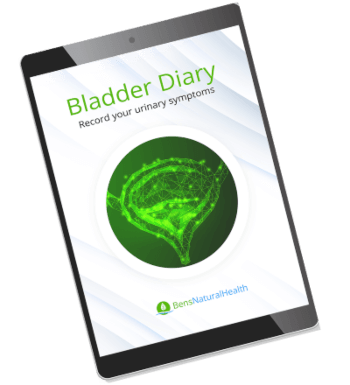The kidneys produce urine to eliminate metabolic wastes and toxins.
It is no longer useful inside the organism but constitutes an important resource for the laboratory.
We can have many clues about what is happening inside the body by looking at and testing the urine.
Even without a microscope, there are plenty of signs we can look at, and cloudy urine is one of them.
But what is cloudy urine? What does cloudy urine mean medically?
This article will review these basics and give you a list of medications that cause cloudy urine.
Medications are sometimes a hidden cause of this sign. So, if you constantly find this problem and nothing appears to go wrong, you could check our list and discuss with a healthcare provider the possibility that medications could be the cause of your cloudy urine symptoms.
Medications that can cause cloudy urine
In some cases, food dyes cause changes in your urine, too. That’s why we have a list of foods that can cause cloudy urine due to pigment buildup.
But if your urine changes are due to white blood cells in the urine and there is no infection involved, we should also consider some medications that cause cloudy urine. They include (7):
1) Penicillin antibiotics
Penicillin and other antibiotics of the same family are often prescribed to treat an infection. It can be a urinary infection.
But one of the side effects is dark or cloudy urine. This is a transient side effect, and it will resolve as soon as you finish your treatment.
It does not leave sequelae, and it is usually not a reason to discontinue your treatment. However, it is worthwhile to talk to your doctor about it to ensure everything is in order.
2) Vancomycin
This is another antibiotic used to treat more severe bacterial infections. However, vancomycin can sometimes cause bloody or cloudy urine.
It may sometimes reduce the urinary output, and your urine may show signs of dehydration, even if you’re properly hydrated.
This is also a transient effect and not a reason to discontinue treatment, but inform your doctor about it, especially if you encounter blood in the urine.
3) Proton pump inhibitors
These medications are used to treat gastritis. One of the most important examples is omeprazole.
They reduce acid production by acting on a metabolic level in the stomach. But they also change how the kidneys work.
Your kidneys can suffer inflammation when using this medication for an extended period. Your magnesium levels may reduce, and your kidneys start to suffer damage. In these cases, cloudy or bloody urine are alarming signs you should report immediately.
4) Steroids
Another group of medications that interact with kidney metabolism is steroids. There are different types.
For example, mineralocorticoids are directly involved in kidney function. One of the side effects can be cloudy urine, and you should report this to your doctor to make sure everything is all right.
5) Olsalazine
This medication is commonly used to reduce bowel inflammation and solve diarrhea. However, it also reduces urine output and may cause foamy or cloudy urine.
You should drink plenty of fluids to reduce the risk of kidney damage if you need to use this type of medication frequently.
6) Non-steroidal anti-inflammatories
Plenty of NSAIDs can also cause cloudy urine. For example, naproxen (Aleve) and Ketoprofen.
These side effects are transient and stop once you discontinue the medications. Report these urine changes to your healthcare provider, especially if you suffer from kidney problems.
Ben’s Prostate Healer For Bladder & Prostate Health
Prostate Healer is a safe, proprietary, unique blend of the world’s 9 most powerful prostate healing and rejuvenating herbs.
Ben’s Prostate Healer is formulated to fight against prostate diseases like prostatitis and BPH, protect bladder health, provide symptomatic relief from urinary tract infections, and reduce inflammation.
It works on the prostate, kidney, and bladder simultaneously, coaxing cells gently to resume normal function.
If you’re like many men that use the formula, you’ll see a reduction in the number of times you get up to go to the bathroom to urinate, plus see an improvement in the flow of your urine.

What is cloudy urine?
Urine changes such as cloudy urine are often indicative of alterations in the composition of this waste product. The urine looks clear yellow in normal circumstances, similar to lemon juice.
Depending on your perception, cloudy urine can be one of the following alterations (1,2):
- Pyuria: This is a type of foggy pee with white blood cells. It looks like cloudy yellow urine because it has pus in it. As you probably know by now, pus is indicative of a urinary infection. This can happen as a result of kidney stones and kidney infections.
- Concentrated urine: Urine is cloudy and dark when you’re dehydrated. In this case, solving dehydration will solve the problem. Dark cloudy urine can also have a foul smell, in which case you may also have an infection.
- Urine mixed with other secretions: Other secretions can drop along with urine in men and women. For instance, if you have a urethral or vaginal discharge, it will likely show in your urine as a fuzzy cloud. In some cases, semen traces may also give the appearance of cloudiness in urine samples.
As noted, there are multiple causes of cloudy urine. Thus, you may need to go through studies to find out precisely what cloudy urine means in your case.
Get 10% Off Our Products!
- Sign up to our newsletter
- Get Your FREE PSA Lowering Diet Plan
- Be the first to hear about sales and promotions
- Stay up to date on our latest health news
What does cloudy urine look like?
Your urine should be yellowish but still clear. It shouldn’t have a haze or particles in it. There are plenty of urine changes, and it is sometimes difficult to perceive when and why urine is cloudy.
Cloudy pee looks foamy or has a whitish haze. This appearance is probably caused by white blood cells in the sample. This is a clinical sign known as pyuria, and it is a sign of infection. It can also happen in dehydration.
Another sign of dehydration is dark brown or orange urine, which may sometimes look cloudy. In this case, the most likely reason is dehydration.
However, you could have bile in the urine and other components. So, every time you perceive urine changes, it is essential to run urine tests. That’s the only way to know for sure the message your body is trying to convey.
This is a brief overview of different urine changes and what they mean (2):
- Dark and cloudy urine: It can be due to dehydration. Infection is a possibility, especially if it is both cloudy and smelly urine at the same time.
- Yellow and cloudy urine: Dehydration is not likely the cause when your urine is yellow or very clear. You might need to rule out infections and kidney disease in such cases.
- Cloudy foam in the urine: When you encounter very cloudy urine with thick foam, it is probably due to a severe kidney infection. Visit or notify your healthcare provider as soon as possible.
- Visible particles floating in the urine: When you have visible particles floating around, it can be due to an external secretion combined with your urine, very small kidney stones, or epithelial tissue that comes out when you’re throwing larger stones.
What symptoms can accompany cloudy urine?
There are some health conditions to rule out when urine is cloudy. Each has its accompanying signs and symptoms.
Cloudy urine in women can be due to vulvovaginitis. This is swelling of the vaginal tissue with secretion. These women may also experience irritation and itchiness, vaginal secretions, dysuria (pain when voiding), and pain during intercourse (3).
Cloudy urine in men can happen in a case of prostatitis. This is an inflammation of the prostate gland. Other symptoms include reduction in the urinary flow, increased urinary frequency, dysuria, and pain in the perineum or pelvis (4).
In both men and women, cloudy urine can be due to an unresolved urinary infection. In such cases, patients will display other symptoms of cystitis such as burning pain when urinating, strong or foul odor of the urine, lower abdominal pain, and fever. The same happens in the case of a sexually transmitted infection (5).
Cloudy urine while pregnant is usually because of changes in a woman’s hormones. It can also be due to yeast infections, in which case they will also have a white and thick vaginal discharge along with itchiness and irritation.
Sometimes pregnant women can have this symptom if they have excess proteins in the urine. This can signify preeclampsia, which is a dangerous condition in a woman (6).
As such, it is crucial to rule out the causes of cloudy urine. Accompanying symptoms can provide a clue, but you need lab tests as well.

When should I be worried about cloudy urine?
The first thing you can do in these cases is drink more water. If this solves the problem, there’s nothing to worry about. If not, you might need a urine test.
Cloudiness in urine samples should always be analyzed if they do not improve after drinking sufficient liquids. The results of urine tests will give your doctor a clue as to what is happening and whether or not to worry about it.
If you’re only relying on visible physical cues, they may not be enough. However, this is not a sign you should overlook.
If we find white blood cells in the urine, this is probably due to a kidney infection, which sometimes does not give the usual signs of burning pain in the urine.
Thus, you should be worried about cloudy urine if you have additional symptoms and when the sign is maintained after drinking sufficient liquids.
Get your FREE bladder diary
- Daily bladder diary
- Better understand your urinary symptoms
- Step-by-step guide
Should you see a doctor for cloudy urine?
Talk to your doctor if your pee is cloudy or foggy, especially if the problem does not solve after drinking more water. Consider reporting your finding in these cases, too:
- If you have accompanying symptoms such as fever, urinary discomfort, and pain
- If you suffer from kidney disease or previously had kidney problems
- You see blood or stone particles in the urine
- If you have an active urethral or vaginal discharge
- If you are taking multiple medications, especially those listed above.
Conclusion
If you suddenly started noticing cloudy urine in the morning, the first guess would be that you’re not drinking enough water.
If you drink more liquids and still have the symptom, there are plenty of health conditions to rule out.
Similarly, if your cloudy urine is accompanied by other symptoms, there is a high chance that something is wrong, and you need to see a doctor.
When multiple tests are made and the most common causes of cloudy urine are ruled out, we should evaluate more unlikely causes.
For example, cloudy urine can be due to a medication side effect. Medications that cause cloudy urine include antibiotics such as penicillin and vancomycin, steroids, proton pump inhibitors, NSAIDs, and olsalazine.
Explore More








